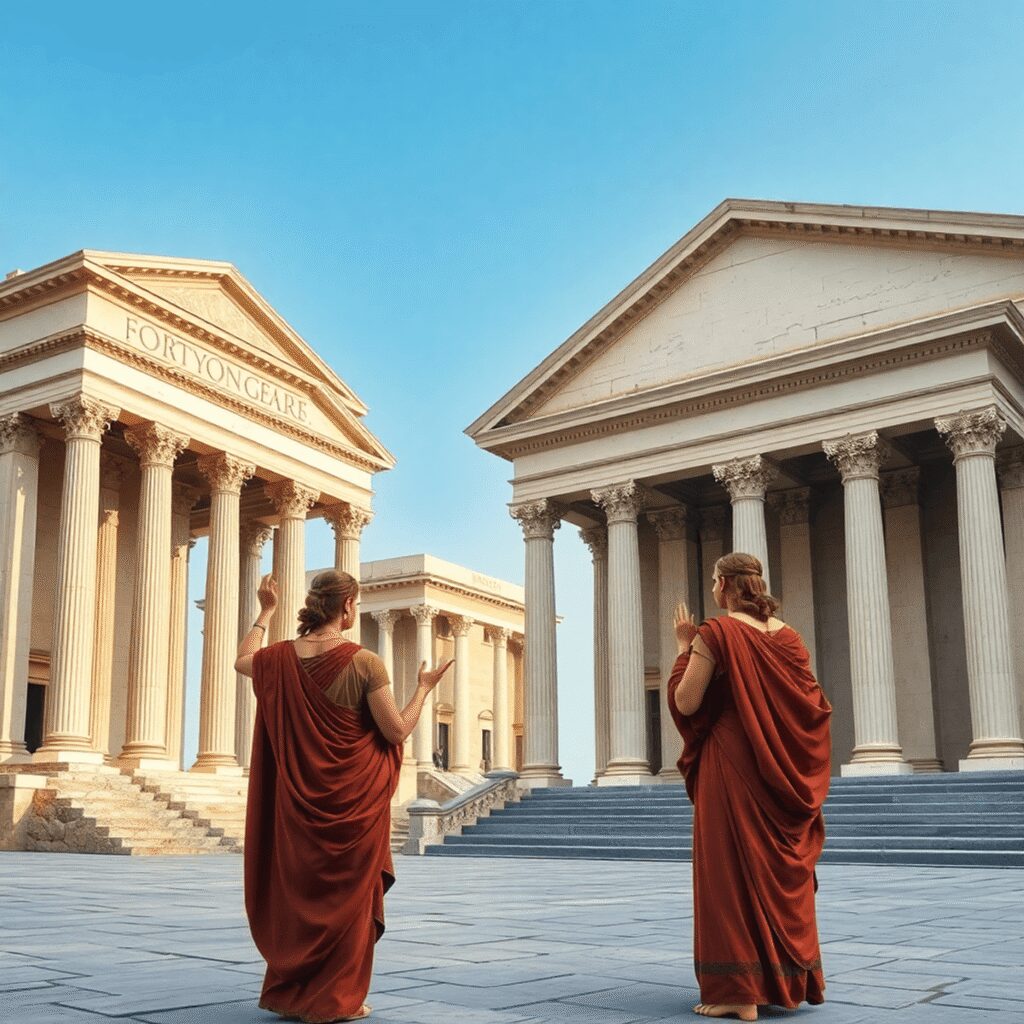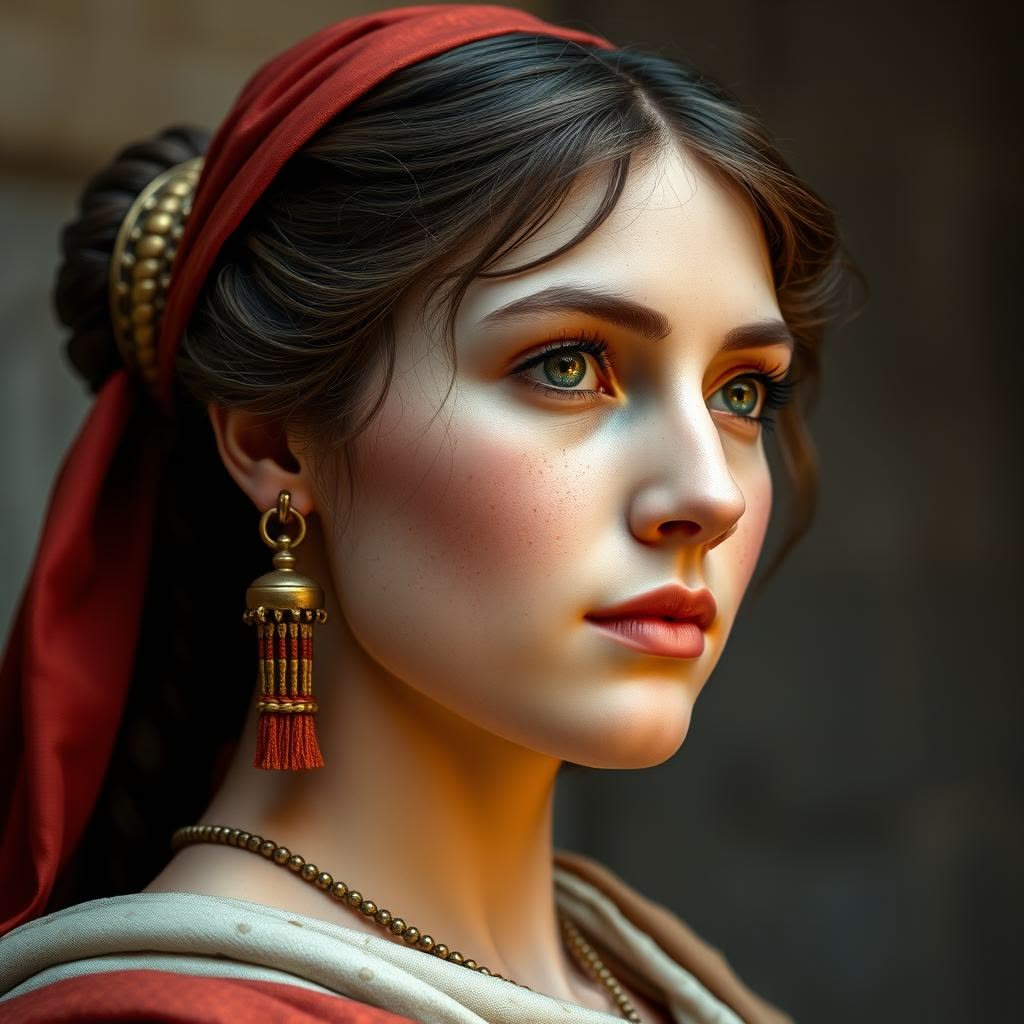The topic of Women Architects and Builders in Ancient Rome: Myths vs. Reality invites a closer look at the often misunderstood roles women played in shaping Roman architecture and construction. Popular narratives sometimes suggest that women held formal positions as architects or builders, but historical evidence tells a more nuanced story.
This article aims to separate fact from fiction by exploring authentic sources and highlighting the real contributions of Roman women in this field. You will discover how, despite lacking official professional titles, women influenced Rome’s built environment significantly through patronage and social influence.
Key takeaway: While Roman women rarely served as architects or builders by profession, their role as patrons and supporters of architectural projects was vital. Their impact helped shape public spaces and monuments, reflecting their status and power within Roman society.
Explore with us the myths versus reality surrounding women architects Ancient Rome and women builders Ancient Rome, uncovering truths often overshadowed in history.
It’s essential to understand that the daily life in ancient Rome was vastly different for various social classes, especially the patricians and plebeians. This social structure influenced the roles women could play, including their involvement in architecture and construction.
Moreover, the spectacle of ancient Rome such as gladiators, chariot races, and theaters was a crucial part of society, affecting social relationships and political authority. These events were not just entertainment; they were deeply intertwined with the fabric of Roman life.
The legacy of Ancient Rome is profound and enduring, having shaped Western civilization in numerous ways. From governance to culture and innovations, the impact of Roman civilization can be seen in various aspects of modern society.
For those interested in delving deeper into these fascinating topics about ancient Rome, Men of Pompeii is your ultimate online resource dedicated to exploring this captivating world.

Understanding the Role of Women in Roman Society
The roles of women in ancient Rome were primarily defined within the family structure. Their main responsibilities centered on being devoted wives and nurturing mothers. These roles were not simply domestic duties but were essential to the stability and continuation of Roman society.
Key Virtues Shaping Expectations for Women
Key virtues shaped expectations for women:
- Pietas: This meant devotion—not only to family gods but also to one’s husband and household. Pietas was a public and private duty, reflecting loyalty and reverence.
- Pudicita: Often translated as modesty, pudicita encompassed chastity, sexual fidelity, modest behavior, and fertility. It was a moral cornerstone that upheld a woman’s honor and by extension, that of her family.
- Concordia: Signifying harmony within the household and community, concordia represented peaceful relations between spouses and family members, which contributed to social order.
These virtues were more than ideals; they were practical guidelines embedded in Roman culture to maintain hierarchy and social cohesion. A woman displaying pietas, pudicita, and concordia upheld her family’s reputation and helped reinforce Rome’s patriarchal values. Her influence was subtle but pervasive—instilling discipline and morality behind the scenes rather than through public authority.
The Interconnection Between Roman Women’s Roles and Societal Significance
Roman women roles were thus tightly interwoven with these virtues, shaping their identity in ways that extended beyond mere domesticity into broader societal significance. However, it’s important to note that while the structure of power in the Roman Republic was predominantly male-dominated, as detailed in this article on the structure of power, women still played vital roles within their families which indirectly influenced society at large.
Moreover, the economic landscape of Rome during this period was significantly shaped by agriculture, a sector where women often held substantial responsibility. This aspect is explored further in our article about the role of agriculture in Roman economic growth.
In addition to their familial roles, Roman women were also deeply intertwined with the religious practices of the time. These practices not only formed a part of their personal lives but also influenced broader societal norms. For an in-depth understanding of this aspect, please refer to our exploration of ancient Roman religion.
Lastly, while military might was another domain predominantly occupied by men, it is interesting to consider how the outcomes of such military endeavors could have affected women’s lives back home. The Roman army’s role in shaping the empire is an essential aspect of this discussion.

Legal Rights and Social Status of Roman Women
The legal status of Roman women reflects a complex interplay of rights and restrictions that significantly influenced gender dynamics in ancient Rome. Despite these complexities, Roman women’s rights were notably advanced compared to many ancient cultures, particularly regarding property and legal autonomy.
Unlike in Greek society, Roman women could own and inherit property independently, a significant aspect of their social status. This right allowed them to accumulate wealth and wield economic influence within their families and communities.
Key legal privileges
Key legal privileges included:
- Property Ownership: Women could acquire, control, and dispose of property without male guardianship, especially after the reforms under Augustus. This enabled elite women to manage estates actively.
- Estate Management: Many women took charge of family assets, overseeing agricultural lands, rental properties, and financial transactions. Their involvement in estate affairs was essential for maintaining family wealth across generations.
- Divorce Rights: Roman women had the legal right to initiate divorce, a right uncommon in many contemporary societies. This ability gave them personal agency in marital relationships and the option to leave unfavorable unions.
These rights did not equate to full equality but reflected a relatively empowered status for Roman women. Their capacity to handle economic matters and make decisions about marriage contributed to their influence both within the household and the wider society.
The legal framework supporting these rights provided a foundation for some women to become prominent patrons and influencers in public life—roles that intersected with architecture and building projects indirectly through property ownership and wealth management. The Twelve Tables, created between 451-450 BCE, were a significant milestone in the development of Roman law. These laws were the first attempt to codify the complex and often arbitrary legal practices of ancient Rome.
Overall, exploring this intricate legal landscape offers valuable insights into the rise and fall of the Roman Empire, a civilization that has left an indelible mark on the world, shaping politics, culture, and society in ways that continue to resonate today.

The Influence of Women in Public Life
Women have historically exerted an indirect political influence, often through advising their husbands or sons who held political office. This influence can be contextualized within the broader societal framework of ancient Rome, where plebeians, the common people, played a vital role in shaping the political landscape.
Additionally, female patronage in public buildings and monuments served as a means for women to assert their social status and contribute to the civic identity of Rome. This aspect of women’s influence is particularly interesting when considering the birth of the Roman Republic, a period marked by a significant shift from monarchical rule to a republican system around 509 BCE. Understanding this transition is essential for grasping the complexities of Roman governance and its enduring impact on modern political structures.
Furthermore, it’s fascinating to explore how one can immerse themselves in this rich historical context through role-playing games like Second Life, where users can experience life in ancient Rome, offering a unique perspective on the past.
Debunking Myths About Women Architects and Builders
Many myths about women architects and female builders have gained traction, often inflating the extent of women’s direct involvement in the architectural and construction professions of Ancient Rome. One prevalent misconception claims that all notable Roman buildings were designed or constructed by women, a narrative unsupported by historical evidence. This exaggeration stems partly from a desire to highlight women’s contributions in fields traditionally dominated by men but lacks concrete documentation.
Key misunderstandings include:
- Assuming female architects existed in large numbers: No records confirm women practicing as architects or professional builders during this period.
- Attributing architectural innovations directly to women: Some patrons were women, but they did not engage in technical design or construction work.
- Romanticized retellings of Roman history: Later interpretations, especially in modern feminist discourse, sometimes project contemporary values back onto Ancient Rome without critical examination of sources.
These myths often arise from:
- Limited primary sources: The scarcity of female voices leads to speculation.
- Symbolic roles conflated with professional ones: Women’s patronage was vital but not equivalent to being an architect or builder.
- Modern desire to rewrite history: A well-intentioned effort to acknowledge women’s influence can blur factual boundaries.
Understanding these distinctions helps clarify the real impact women had on Rome’s built environment without overstating their professional roles. It’s also important to recognize the significant contributions of male figures in shaping Roman architecture and engineering. For instance, Scipio Africanus, a notable figure in Roman history, played a crucial role in the Second Punic War which ultimately established Rome’s dominance. Furthermore, the incredible Roman engineering feats that changed the world were primarily driven by male architects and builders. Lastly, while examining these historical narratives, it’s essential to understand the influence of Roman mythology on modern culture, which often reflects the societal norms and political aspirations of that time.
The Reality: Women’s Roles Related to Architecture and Building Projects
Historical records emphasize female patronage buildings Rome rather than women’s direct participation in architectural design or construction. Women of elite status, such as Livia Drusilla, wife of Emperor Augustus, are notable examples of this phenomenon. Livia’s sponsorship of public works, including the famous Ara Pacis Augustae, highlights the role women played as donors and benefactors rather than practitioners.
Women donors architecture Rome often used their wealth and social standing to commission structures that reinforced family prestige and contributed to Roman civic identity. Their involvement typically took the form of funding projects or dedicating statues, rather than engaging in technical or architectural planning. These acts were symbolic expressions of power and influence within the constraints of a male-dominated profession.
Evidence points to:
- Women managing estates that included building projects.
- Female patrons providing financial backing for temples, altars, and public monuments.
- Dedications inscribed on buildings acknowledging women’s contributions without implying professional authorship.
The distinction between patronage and professional expertise is crucial. While these women shaped Rome’s built environment through resources and status, there is no substantive proof that they held formal architectural knowledge or roles as builders. Their impact lies in enabling construction projects that reflected their family’s prominence and values rather than in hands-on architectural work.
The Roman architecture during this time period serves as a testament to the innovative spirit of the era. The Romans were not merely builders; they were innovators who transformed the architectural landscape of their time. Their structures were not only functional but also served as a testament to their power and cultural identity.
Case Studies: Female Patrons Shaping the Built Environment
Livia‘s Influence on Ancient Roman Architecture
Livia, the wife of Emperor Augustus, stands out as one of the prominent female patrons who left a lasting impact on the architectural landscape of Ancient Rome. Through her support, the Ara Pacis Augustae, an altar dedicated to Pax, the Roman goddess of peace, was erected. This monument not only symbolized Augustan ideology but also showcased Livia’s influence in shaping public spaces.
The Power of Elite Roman Women
Livia’s involvement in projects like the Ara Pacis Augustae underscores the social standing and power that elite Roman women wielded. While she might not have been an architect or builder by profession, her patronage demonstrated how women could assert authority and leave a mark on the urban fabric of Rome through their financial support and connections.
By delving into these case studies, we gain a deeper understanding of how women like Livia navigated within societal constraints to impact architectural projects significantly. Their contributions as patrons shed light on the nuanced roles they played in shaping the built environment of Ancient Rome.
Conclusion
While we must emphasize the importance of respecting women’s social roles in Ancient Rome, it’s equally crucial to acknowledge their limited involvement in architecture and building professions during this period.
Roman women’s contributions to the built environment, both as patrons and influencers, leave a significant mark on history. This legacy is intertwined with the broader art and culture in Ancient Rome, which showcases remarkable artistic expressions influenced by earlier Greek and Etruscan traditions.
Furthermore, the impact of Roman law on modern legal systems is a testament to the enduring legacy of this ancient civilization.
Additionally, exploring the rise of Stoicism in Rome, a philosophical school that emphasized living in harmony with nature and practicing virtue, can provide deeper insights into the societal norms and values of that era.
Finally, understanding the role of gladiators in Roman entertainment offers a unique perspective on the complex social system of ancient Rome, where these brave warriors were admired for their skills yet also seen as victims of circumstance.

